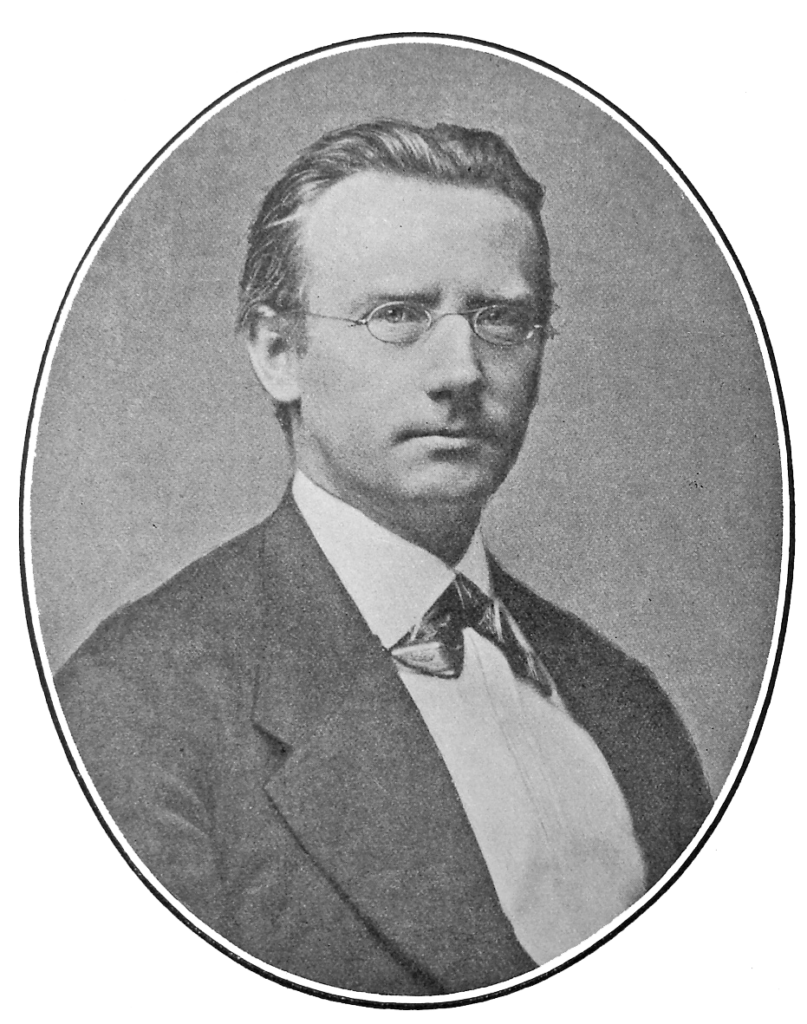PETER HEISE

1830-1879
– the first Romantic with a special ‘Danish’ singing style
Peter Heise is the secret weapon of the Danish Romantic movement; if his romances had not been in Danish, they might be sung all over the world today.
Peter Heise’s mother died during his birth, and his father never really recovered from that tragedy. The childhood home remained a sombre place for many years. The family were mainly civil servants, and the expectation was that Heise would follow a similar career.
However, Heise wanted to be a composer. At the age of 18 he attended lessons in music theory with A.P. Berggreen, and showed an unusual interest in folk ballads. Niels W. Gade became his mentor shortly after Gade’s return from his years as a star in Leipzig’s music life.
Peter Heise himself also travelled to Leipzig in 1852, with the spirit of Mendelssohn hovering over the waters. German song composers such as Robert Schumann (1810-1856) and Richard Wagner (1813-1883) were still alive at the time. Danish composers such as Gade and Heise found that they preferred Schumann’s tradition-conscious style to Wagner’s progressive expression.
In 1857 Peter Heise became a music teacher at Sorø Academy, with the hymn writer B.S. Ingemann (1789-1862) as a good colleague. Soon, however, he no longer needed the money: In 1859 he married into the Hage family, who were well off. His father-in-law commissioned the giant painting Den grundlovgivende rigsforsamling (‘The Danish Constituent Assembly’) from the painter Constantin Hansen that same year and placed it in the living room – where it could be viewed for a fee!
The composer and his wife lived for the rest of their lives in a country house north of Copenhagen. They lived a comfortable life, with frequent trips to Paris and Rome in particular, and reportedly with childlessness as their only sorrow. A national and cultural venture, the Society for The Publication of Danish Music – today identical with the publishing house Edition-S – was founded in the couple’s garden.
At the time of his unexpected death at the age of 49, Peter Heise was in the midst of an exciting development: He had discovered how to write musical drama, with the opera Drot og marsk (‘King and Marshal’) from 1877 as the successful result. Moreover, he had allowed his songs to grow into “scenes” with well-composed melodies and sophisticated accompaniment. His romances from the 1870s remain some of Denmark’s very first art songs composed specifically for Danish diction.
Søren Schauser
| Collection | Op | No | Title | Poet |
|---|---|---|---|---|
| Gudruns sorg | 1 | Dengang var Gudrun beredt til Døden | Den ældre Edda | |
| Gudruns sorg | 2 | Hos sad Jarlers ædle Hustruer | Den ældre Edda | |
| Gudruns sorg | 3 | Da sagde Herborg | Den ældre Edda | |
| Gudruns sorg | 4 | Da sagde Gullrønd | Den ældre Edda | |
| Gudruns sorg | 5 | Engang Gudrun end ham skued | Den ældre Edda | |
| Gudruns sorg | 6 | Da sagde Gudrun | Den ældre Edda | |
| Digte fra Middelalderen | 7 | Skjønne fru Beatriz | Thor Lange | |
| Erotiske sange | 4 | Skoveensomhed | Emil Aarestrup | |
| Farlige drømme | 1 | Du lægger dig ned en Aftenstund | Holger Drachmann | |
| Farlige drømme | 2 | Hvor Engen har foldet, ved Mosens Bred | Holger Drachmann | |
| Farlige drømme | 3 | Det blinker med Perler | Holger Drachmann | |
| Farlige drømme | 4 | Saa lad Sangen i Salene bruse | Holger Drachmann | |
| Farlige drømme | 5 | I Skoven er der saa stille | Holger Drachmann | |
| Farlige drømme | 6 | Den blomstrende Sommer blev kjædet til Høst | Holger Drachmann | |
| Aases sange | 1 | Det var sig Humleranken | Christian Richardt | |
| Aases sange | 2 | Jeg kjender af Navn kun Guldet | Christian Richardt | |
| Aases sange | 3 | Jeg beder for hver | Christian Richardt | |
| Dyvekes sange | 1 | Skal altid fæste mit Haar under Hue | Holger Drachmann | |
| Dyvekes sange | 2 | Ak, hvem der havde en Hue | Holger Drachmann | |
| Dyvekes sange | 3 | Hvad vil den Mand | Holger Drachmann | |
| Dyvekes sange | 4 | Vildt, vildt, vildt suser Blæsten | Holger Drachmann | |
| Dyvekes sange | 5 | Næppe tør jeg tale | Holger Drachmann | |
| Dyvekes sange | 6 | Det stiger | Holger Drachmann | |
| Dyvekes sange | 7 | Se, nu er Sommeren kommen | Holger Drachmann |